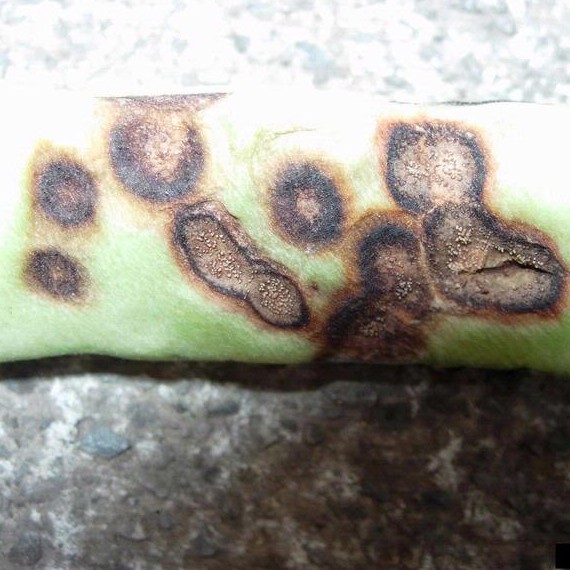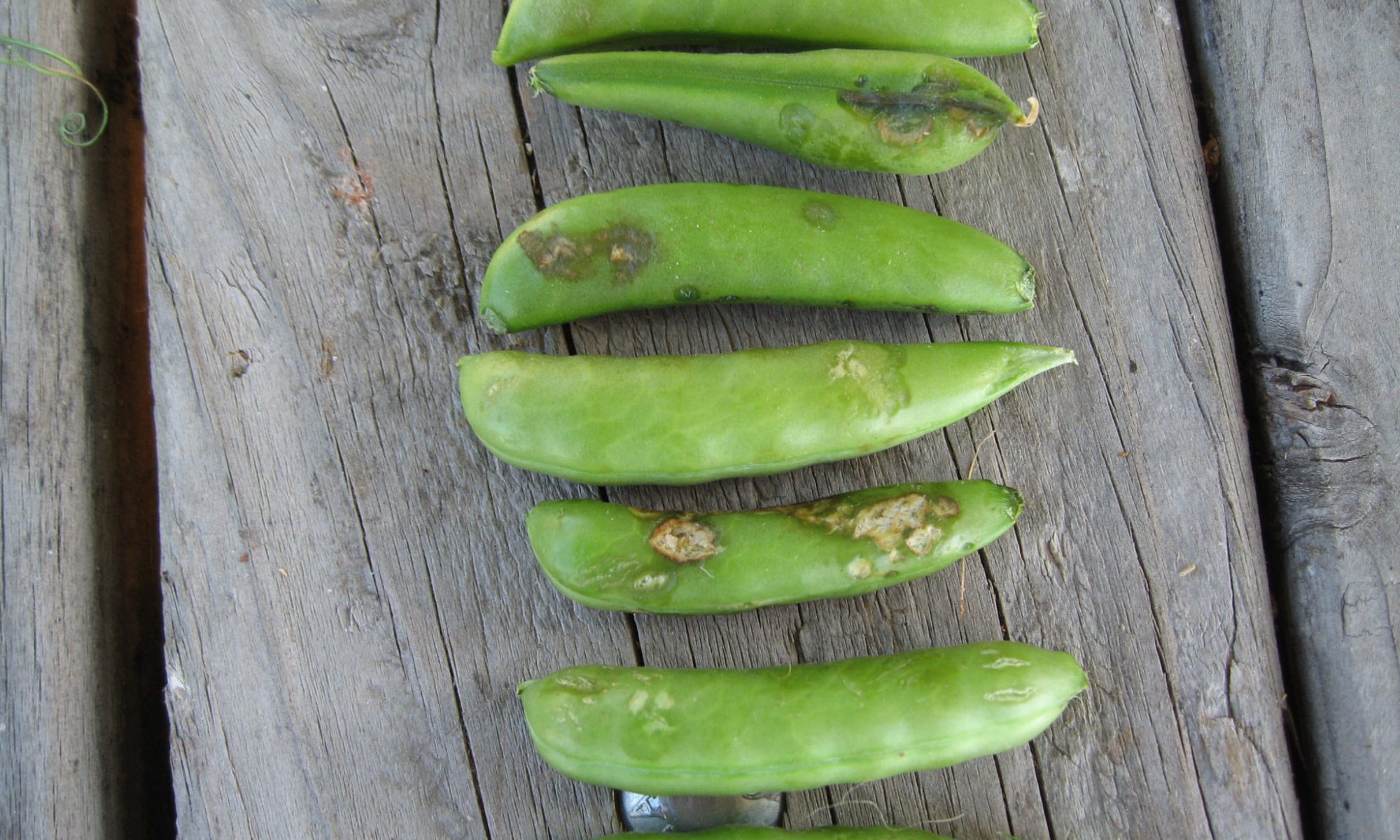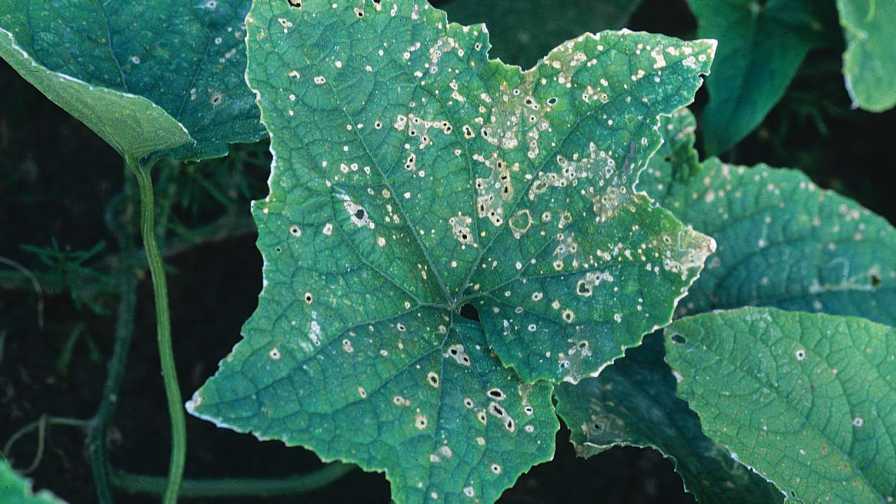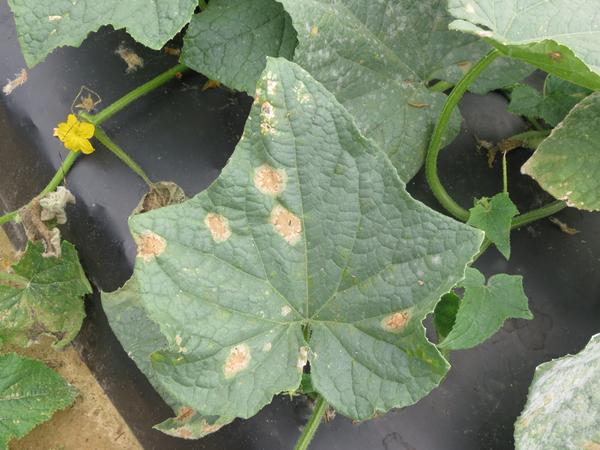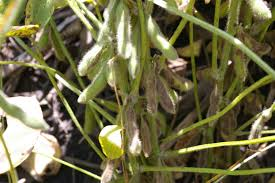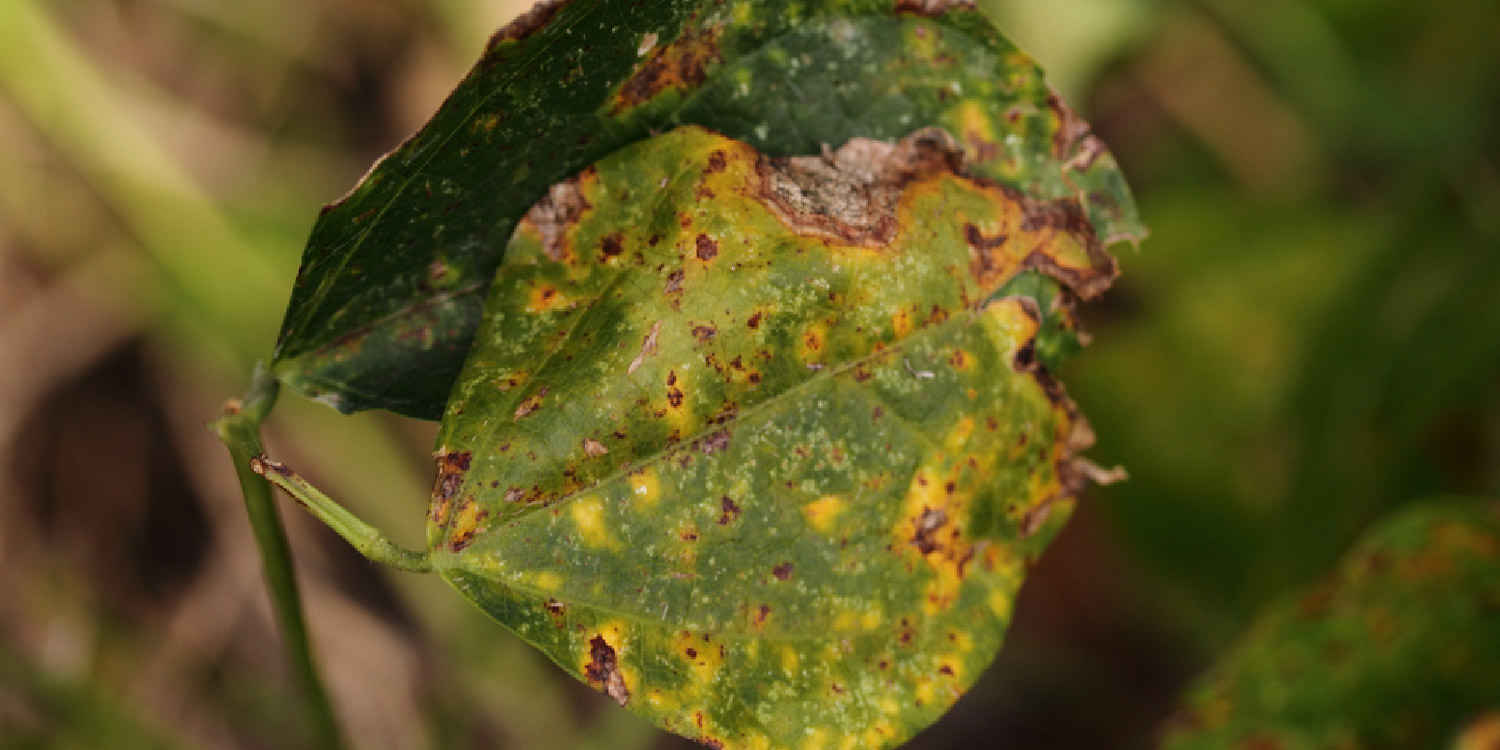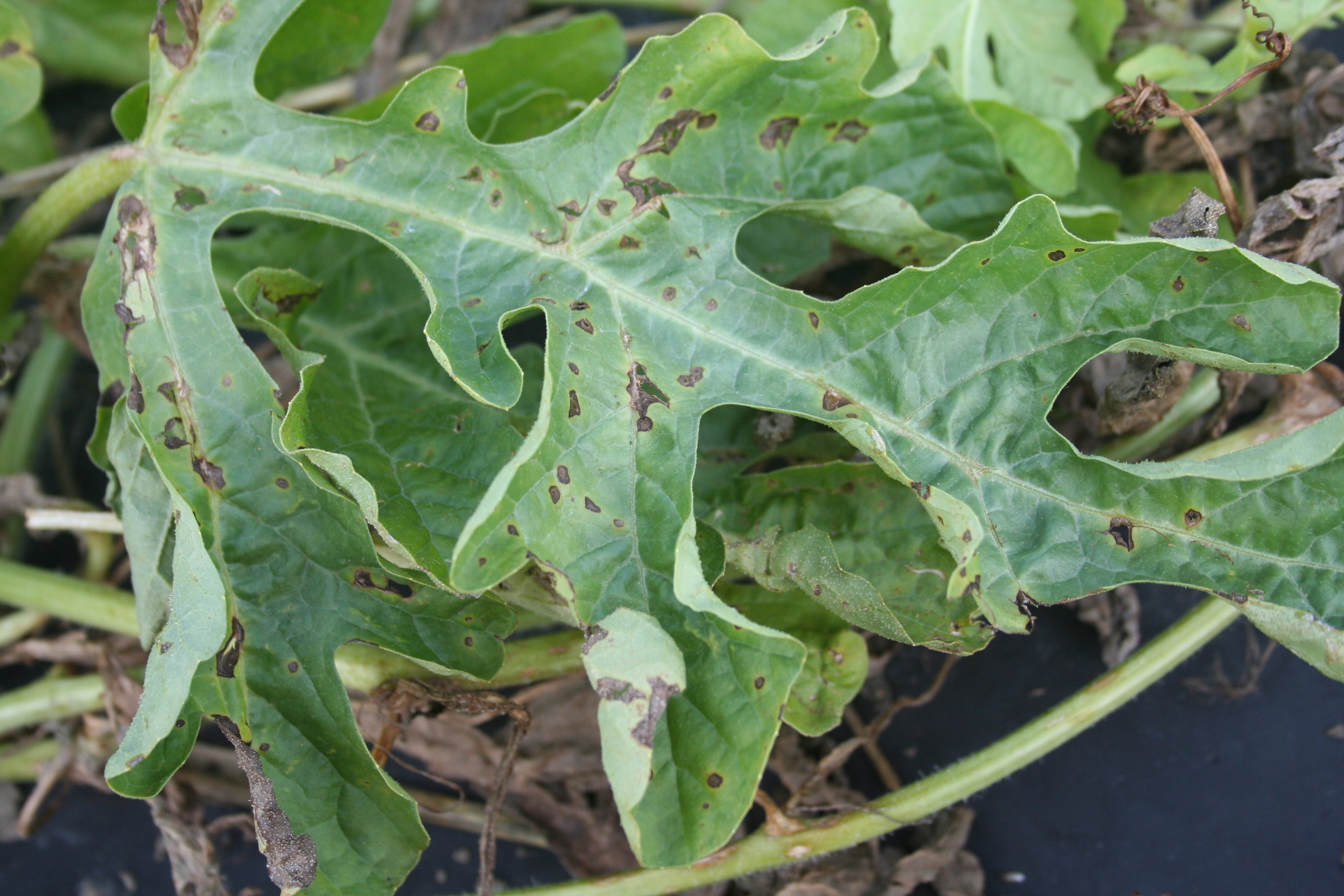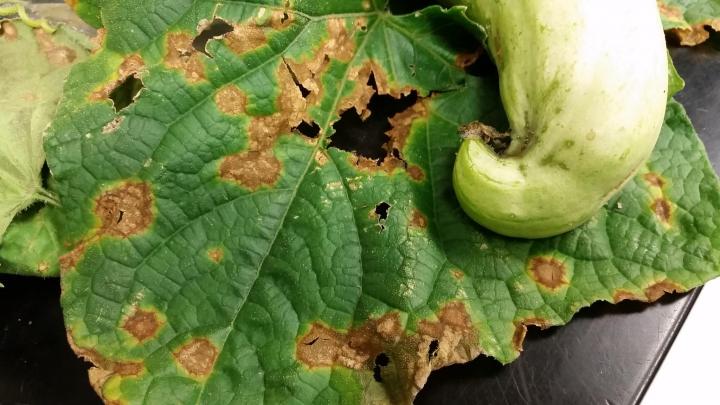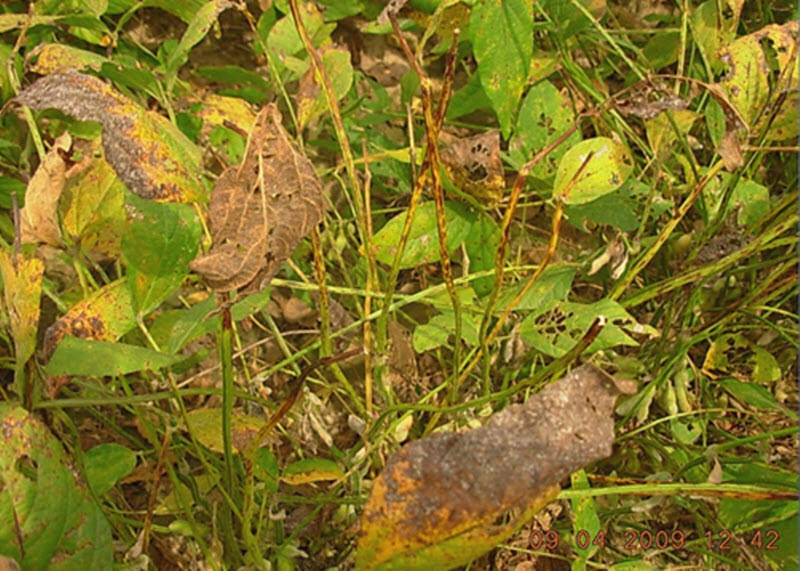- Use disease free certified seed.
- Do not grow pea for at least two years in the same land that has carried on infected crop.
- Remove and destroy the disease infected pea plants to check the spread of disease.
- Treat the seeds with carboxin 37.5 +thiram 37.5% @ 2.5 gm / kg seed.
- Weekly Spray Kasugamycin 5% + Copper Oxychloride 45% WP 320 gm/acre or
- Spray kitazin 48.0 w/w 400 ml/acre.
Identification of anthracnose disease on pea
- Leaves, stems and pods of pea are susceptible to infection.
- Small reddish-brown, slightly sunken spots form on the pods .
- These spots are rapidly developing into large, dark-sunken lesions on plants .
- In moist weather, masses of pink spores develop on these lessons.
- Infection of the leaves causes blacking along the veins particularly on the under surface.
Control of Anthracnose in Cucumber
- Clean cultivation and crop rotation minimize disease incidence.
- Treat the seed with Carbendazim 50% WP @ 2.5 gm/kg.
- Spray Mancozeb 75% WP @ 400 gm/acre or chlorothalonil 75% WP @ 300 gm/acre at 10 days intervals.
Like and share with other farmers by clicking on the button below.
ShareAnthracnose disease in Cucumber
- Different types of symptoms are observed on leaves, petioles, stem, and fruits.
- On young fruits, numerous water-soaked depressed oval spots appear, which coalesce covering large areas.
- Under humid conditions, pink masses of spores can be seen in the center of these spots.
- Pink gummy exudation may also be seen on lesions due to the exudation of spores.
- Vines have brownish specks that grow into angular to circular spots.
- The girdling of the affected portion leads to blight symptoms.
Like and share with other farmers by clicking on the button below.
ShareHow to control Anthracnose or Pod Blight in Soybean crop
- Healthy seed should be selected for sowing.
- The seed should be treated with Thiram+Carboxin @ 2 g/kg of seed before sowing.
- Continuous sowing in the same plot should be avoided.
- Spray the crop with Carbendazim 12% +Mancozeb 63% WP@ 400 Gm/Acre at 10-15 days intervals, first spray be given on the appearance of symptoms.
- In Several Attack, spray the crop with Tebuconazole 25.9% EC @ 200 ml/Acre.
Like and share with other farmers by clicking on button below.
ShareSymptoms of Anthracnose or Pod Blight in Soybean crop
- Soybeans are susceptible to infection at all stages of development. Plants and seeds may be infected.
- If the infected seed is planted, early disease development may result in damping-off (seed or seedling rot causing plant death). Dark brown lesions develop on cotyledons, the stem may collapse, and seedlings may die under severe infection.
- Most commonly, however, plants become infected during bloom and pod fill (reproductive stages) due to spores spread from infected plant residue.
- Symptoms appear on stems, pods, and leaf petioles as irregularly-shaped brown blotches.
- Severe symptoms may include leaf rolling, premature defoliation, and stunted plants. Pods may be shriveled and contain less seed, moldy seed, or no seed
- In some cases, pods can be diseased, and the seed may be infected but without symptoms in the seed.
Like and share with other farmers by clicking on the button below.
ShareControl of anthracnose in cowpea
- Leaves, stems and pods of cowpea are susceptible to infection.
- Small reddish-brown, slightly sunken spots form on the pods and rapidly develop into large, dark-sunken lesion.
- In moist weather, masses of pink spores develop on these lessons.
- Infection of the leaves causes blacking along the veins particularly on the under surface.
- Use disease free certified seed.
- Do not grow cowpea for at least two years in the same land that has carried on infected crop.
- Remove and destroy the disease infected cowpea plants to check the spread of disease.
- Treat the seeds with carboxin 37.5 +thiram 37.5% @ 2.5 gm / kg seed.
- Weekly spray with mancozeb 75% WP@ 400-600/acre.
Like and share with other farmers by clicking on button below.
ShareAnthracnose control in watermelon
- Clean cultivation and crop rotation minimize disease incidence.
- Treat the seed with Carbendazim 50% WP @ 2.5 gm/kg.
- Spray Mancozeb 75% WP @ 400 gm/acre or chlorothalonil 75% WP @ 300 gm/acre at 10 days intervals.
Like and share with other farmers by clicking on button below.
ShareControl of anthracnose in bottle gourd
- Clean cultivation and crop rotation minimize disease incidence.
- Treat the seed with Carbendazim @ 2.5 gm/kg seed.
- Spray Mancozeb 75% WP @ 400 gm/acre or chlorothalonil 75% WP @ 300 gm/acre at 10 days intervals.
Like and share with other farmers by clicking on button below
ShareControl of Anthracnose or Pod Blight in Soybean
Control of Anthracnose or Pod Blight in Soybean:-
- Soybeans are susceptible to infection at all stages of development. Plants and seed may be infected.
- If infected seed is planted, early disease development may result in damping off (seed or seedling rot causing plant death). Dark brown lesions develop on cotyledons, stem may collapse, and seedling may die under severe infection.
- Most commonly, however, plants become infected during bloom and podfill (reproductive stages) due to spores spread from infected plant residue.
- Symptoms appear on stems, pods, and leaf petioles as irregularly-shaped brown blotches.
- Severe symptoms may include leaf rolling, premature defoliation, and stunted plants. Pods may be shriveled and contain less seed, moldy seed, or no seed
- In some cases, pods can be diseased, and the seed may be infected but without symptoms in the seed.
Control:-
- Healthy seed should be selected for sowing.
- The seed should be treated with Thiram+Carboxin @ 2 g/kg of seed before sowing.
- Continuous sowing in the same plot should be avoided.
- Spray the crop with Carbendazim 12% +Mancozeb 63% WP@ 400 Gm/Acre at 10-15 days intervals, first spray be given on the appearance of symptoms.
- In Several Attack, spray the crop with Tebuconazole 25.9% EC @ 200 ml/Acre.
Like and share with other farmers by clicking on button below.
Share
